
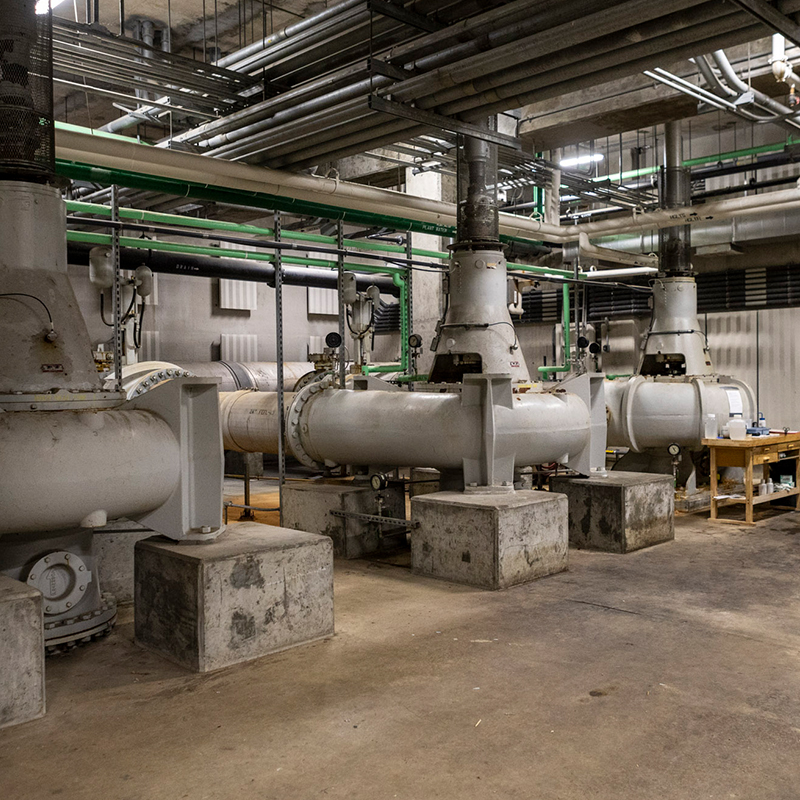
25 Million Gallons of Wastewater A Day
9 Billion Gallons A Year!
Did you know that in less than two minutes our plant processes and treats enough wastewater to fill the 200,000 gallon Giant Ocean Tank at Boston Aquarium?
Our treatment facility is a secondary wastewater treatment plant designed to treat up to 29.7 million gallons per day (mgd). The process includes pumping, screening, de-gritting, settling, biological treatment, disinfection, odor control and biosolids management. Using best management practices, our facility works to conserve and and reduce energy use throughout this process.
How Wastewater Processing
& Treatment Flows
A complex process, there are many steps involved to ensure wastewater is properly cleaned before it is returned to the environment.
Learn more about how our treatment facility operates below.
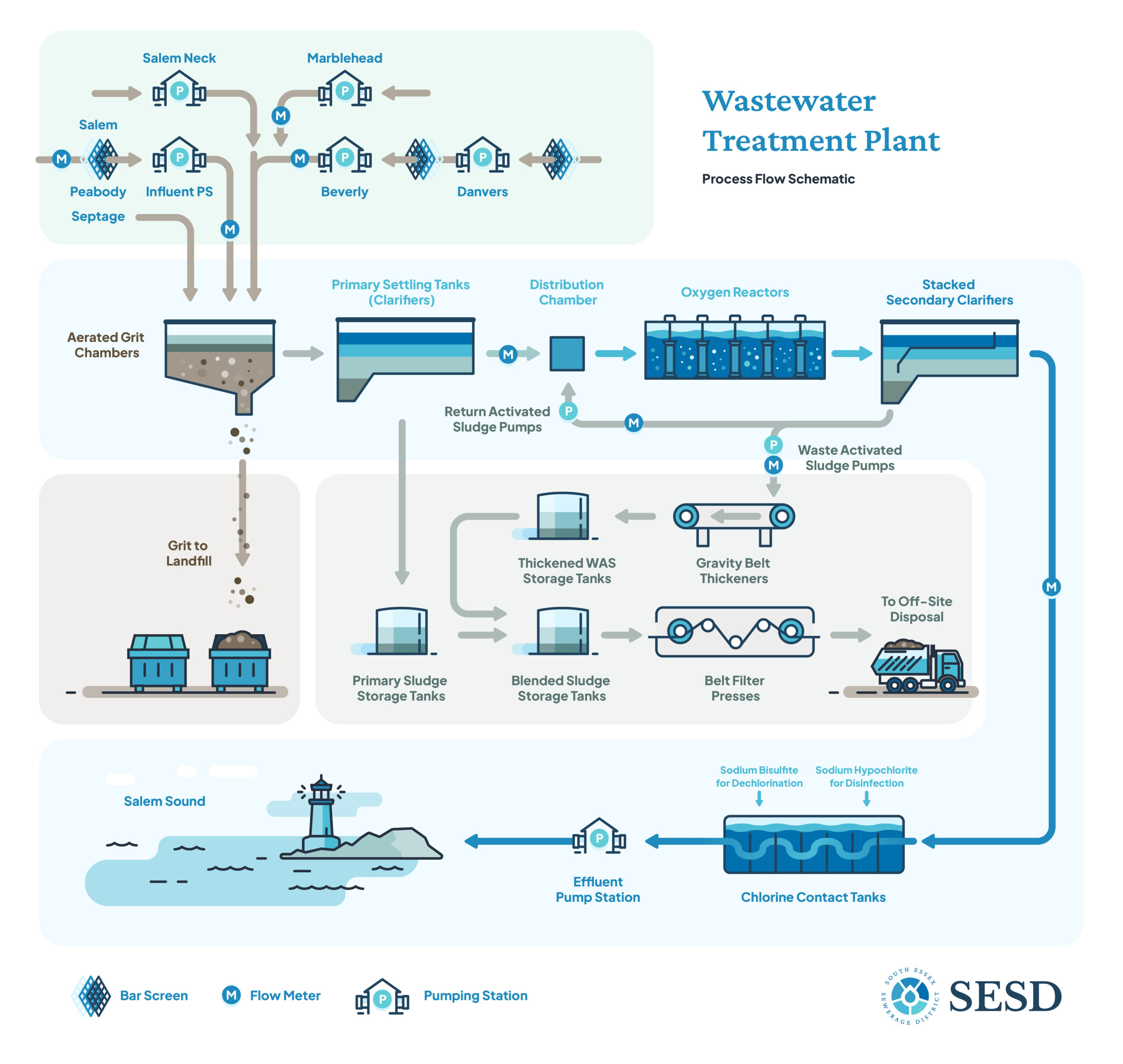
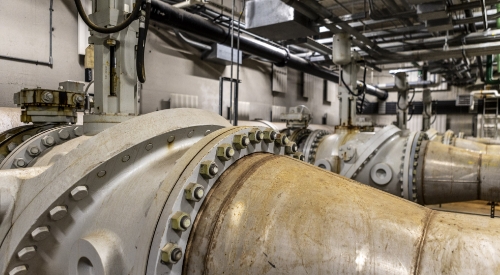
1.Collection
SESD owns and maintains large, shared collector pipes in District communities called interceptors, but does not own or maintain the smaller sewer pipes beneath the streets in your City or Town. These smaller local sewer lines are maintained by the Department of Public Works in each community.
Wastewater is conveyed to our facility in Salem, MA through a combination of gravity interceptors and three offsite pump stations which help move wastewater through the underground pipes located in Beverly, Danvers, and Marblehead. Bar screens at each station remove screenings of sticks, rags, and other large debris in the wastewater before reaching the plant. Two additional pump stations are at SESD for the Peabody / Salem influent and the Salem Neck influent.
The Peabody / Salem influent pump station is also equipped with mechanically-cleaning bar screens which automatically remove solid material from the wastewater.

2.Preliminary Treatment
The screened wastewater is pumped into aerated grit tanks for grit removal. The settled grit is removed for disposal at a landfill.
After passing through the aerated grit tanks, the wastewater flows through pipes and then enters the rectangular underground primary settling tanks where additional solid material in the wastewater is removed.

3.Secondary Treatment
The settled wastewater then flows into rectangular high-purity oxygen reactors.
The high-purity oxygen generation system supplies oxygen to the reactors by stripping nitrogen from compressed air to concentrate the oxygen. Alternatively supplemental liquid oxygen can be added. The reactors use biological organisms to consume the organic matter in the wastewater, breaking it down to carbon dioxide and water.
The flow then enters rectangular secondary clarifiers where the biological organisms are settled out from the wastewater. The secondary clarifiers are stacked on top of each other and flow is split between upper and lower tanks.
A portion of these settled solids – called Return Activated Sludge (RAS) – is removed, and the flow is pumped back to the high-purity oxygen reactors to maintain the biology of the system. The remaining solids – referred to as Waste Activated Sludge (WAS) – are collected and pumped to the operations building for further processing.

4.Recycled Water
The clarified effluent then flows to our two chlorine contact tanks to disinfect the wastewater. Sodium hypochlorite is mixed with the treated effluent as it flows into the chlorine contact tanks to kill microorganisms and any pathogens remaining in the wastewater.
Then, de-chlorination occurs through adding sodium bisulfite to reduce the residual chlorine as it flows out of the chlorine contact tanks. This protects sensitive aquatic species and other environmental hazards.
The treated effluent is pumped by one or more effluent pumps to the outfall diffuser in Salem Sound. From there, it is released back into the environment, where it can be further filtered and purified by natural processes, eventually reentering the water cycle as groundwater, surface water, or atmospheric moisture.

5.Odor Control System
There are six separate odor control systems at the treatment plant. Unlike many wastewater treatment plants, due to the close proximity of our neighbors, all of our tanks are covered or underground. These odor control facilities use chemical scrubbers followed by activated carbon to remove odorous compounds from the wastewater. These systems are located to treat air from Salem Neck pump station, influent pump station, aerated grit tanks, primary settling tanks, oxygen reactors, secondary clarifiers, and the sludge-processing areas.
*For odor control, wastewater is never exposed in open tanks.

6.Solids
The biosolids management at the treatment plant takes Waste Activated Sludge from secondary processing and thickens it with gravity belt thickeners and blends it with primary and secondary solids.
Thickened solids are stored prior to processing with belt filter presses for further dewatering. Dewatered biosolids are loaded and trucked to offsite landfill(s), composting facilities, or for incineration.
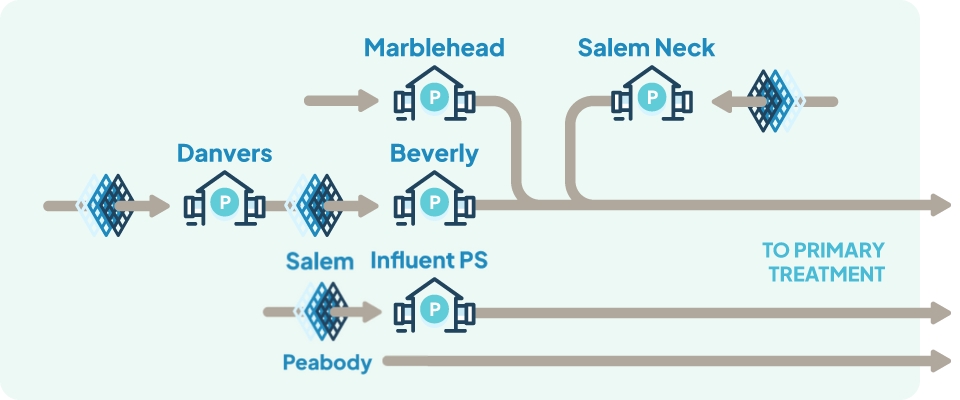
1.Collection
SESD owns and maintains large, shared collector pipes in District communities called interceptors, but does not own or maintain the smaller sewer pipes beneath the streets in your City or Town. These smaller local sewer lines are maintained by the Department of Public Works in each community.
Wastewater is conveyed to our facility in Salem, MA through a combination of gravity interceptors and three offsite pump stations which help move wastewater through the underground pipes located in Beverly, Danvers, and Marblehead. Bar screens at each station remove screenings of sticks, rags, and other large debris in the wastewater before reaching the plant. Two additional pump stations are at SESD for the Peabody / Salem influent and the Salem Neck influent.
The Peabody / Salem influent pump station is also equipped with mechanically-cleaning bar screens which automatically remove solid material from the wastewater.
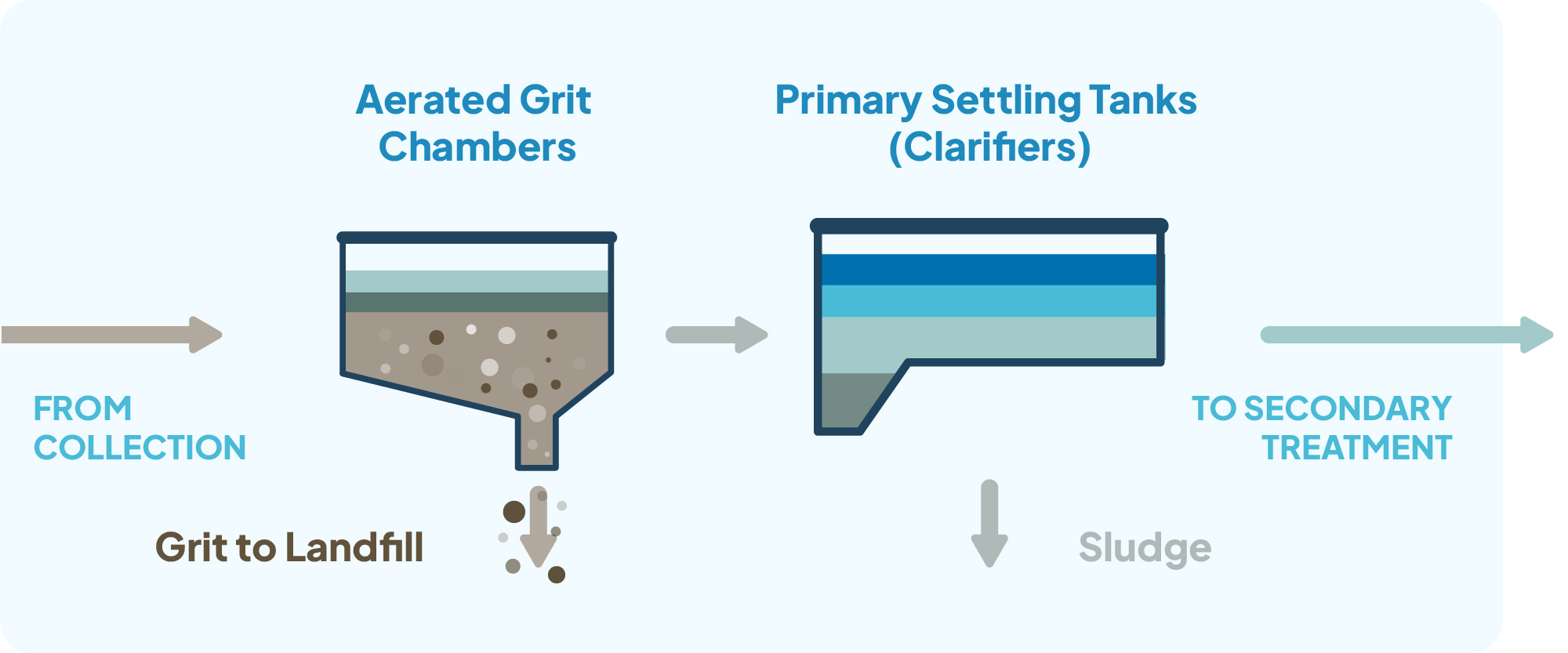
2.Preliminary Treatment
The screened wastewater is pumped into aerated grit tanks for grit removal. The settled grit is removed for disposal at a landfill.
After passing through the aerated grit tanks, the wastewater flows through pipes and then enters the rectangular underground primary settling tanks where additional solid material in the wastewater is removed.
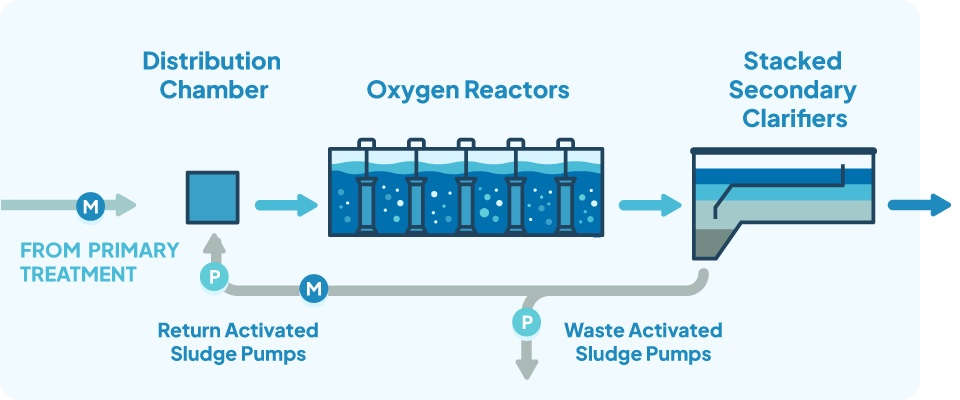
3.Secondary Treatment
The settled wastewater then flows into rectangular high-purity oxygen reactors.
The high-purity oxygen generation system supplies oxygen to the reactors by stripping nitrogen from compressed air to concentrate the oxygen. Alternatively supplemental liquid oxygen can be added. The reactors use biological organisms to consume the organic matter in the wastewater, breaking it down to carbon dioxide and water.
The flow then enters rectangular secondary clarifiers where the biological organisms are settled out from the wastewater. The secondary clarifiers are stacked on top of each other and flow is split between upper and lower tanks.
A portion of these settled solids – called Return Activated Sludge (RAS) – is removed, and the flow is pumped back to the high-purity oxygen reactors to maintain the biology of the system. The remaining solids – referred to as Waste Activated Sludge (WAS) – are collected and pumped to the operations building for further processing.
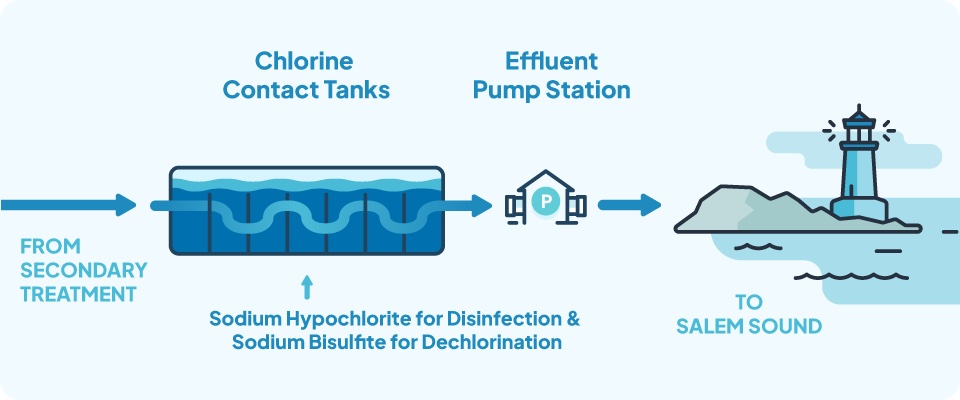
4.Recycled Water
The clarified effluent then flows to our two chlorine contact tanks to disinfect the wastewater. Sodium hypochlorite is mixed with the treated effluent as it flows into the chlorine contact tanks to kill microorganisms and any pathogens remaining in the wastewater.
Then, de-chlorination occurs through adding sodium bisulfite to reduce the residual chlorine as it flows out of the chlorine contact tanks. This protects sensitive aquatic species and other environmental hazards.
The treated effluent is pumped by one or more effluent pumps to the outfall diffuser in Salem Sound. From there, it is released back into the environment, where it can be further filtered and purified by natural processes, eventually reentering the water cycle as groundwater, surface water, or atmospheric moisture.
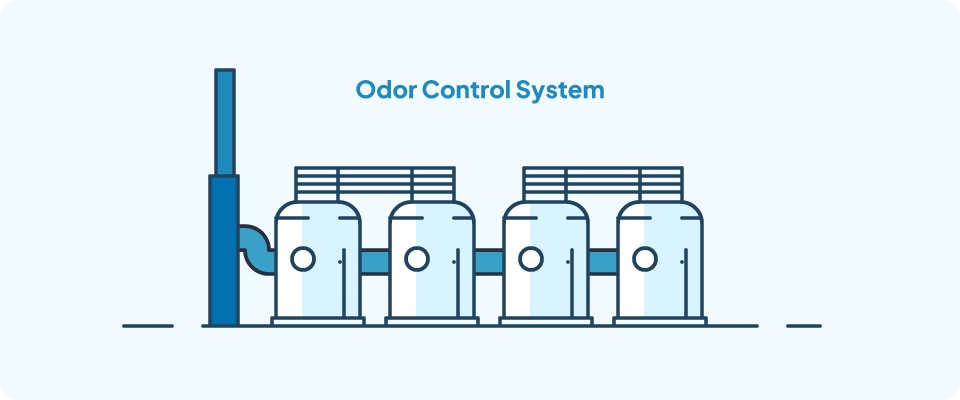
5.Odor Control System
There are six separate odor control systems at the treatment plant. Unlike many wastewater treatment plants, due to the close proximity of our neighbors, all of our tanks are covered or underground. These odor control facilities use chemical scrubbers followed by activated carbon to remove odorous compounds from the wastewater. These systems are located to treat air from Salem Neck pump station, influent pump station, aerated grit tanks, primary settling tanks, oxygen reactors, secondary clarifiers, and the sludge-processing areas.
*For odor control, wastewater is never exposed in open tanks.
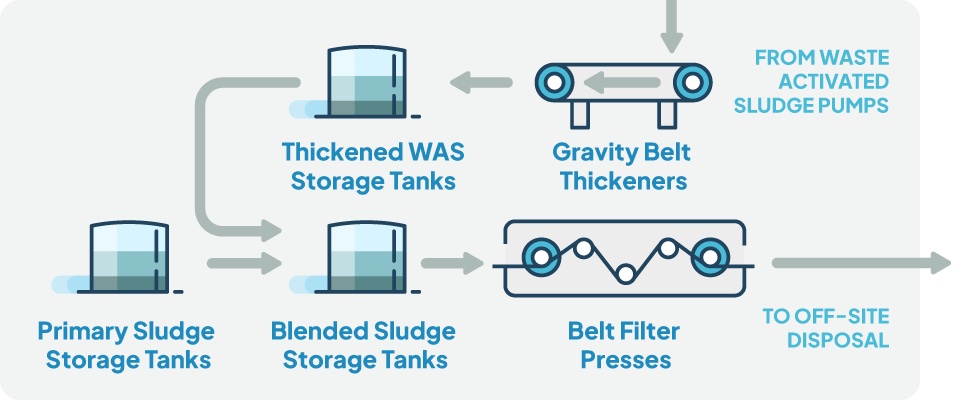
6.Solids
The biosolids management at the treatment plant takes Waste Activated Sludge from secondary processing and thickens it with gravity belt thickeners and blends it with primary and secondary solids.
Thickened solids are stored prior to processing with belt filter presses for further dewatering. Dewatered biosolids are loaded and trucked to offsite landfill(s), composting facilities, or for incineration.
